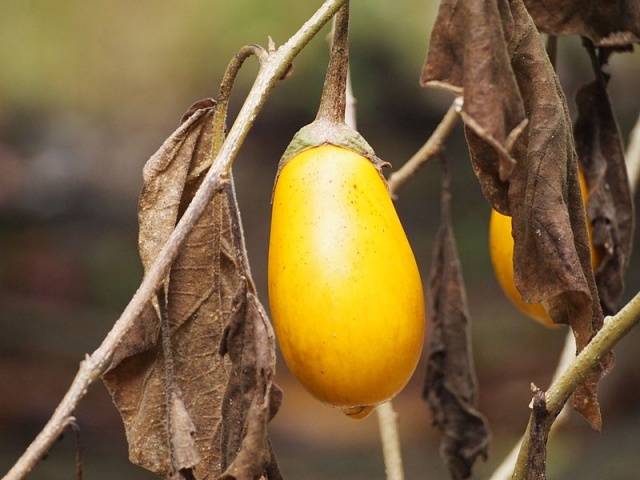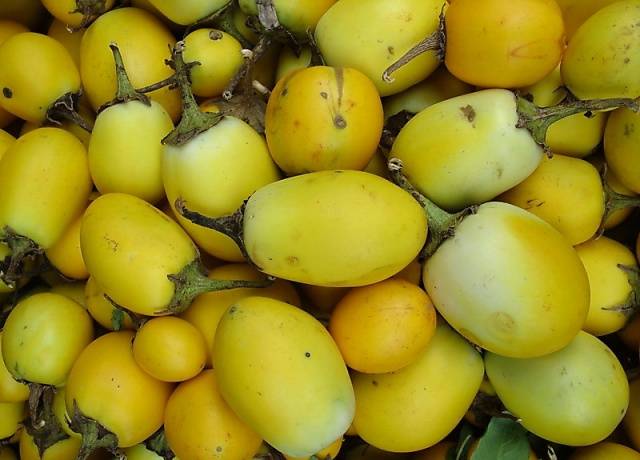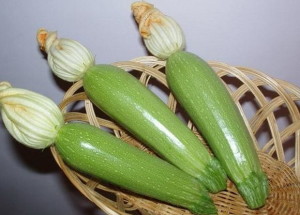Content
In addition to the usual varieties, every year I want to grow something unusual and taste it. As for varietal eggplants, today there are a huge number of species forms. People call them “little blue,” but almost black, pink, and white fruits grow beautifully in the beds. But the biggest find can be considered yellow eggplants. Today we’ll talk about the latter.
Short description
The list of varieties and hybrids of various plants grows every year. This also applies to our favorite eggplants. Today they have become widespread white, yellow and even orange eggplants. Growing such varieties is no different.
The homeland of this vegetable crop is India. This means that the vegetable loves moisture and warmth. Breeders have made significant progress in obtaining varieties that are resistant to temperature extremes, since our climate as a whole is significantly different from the tropical one. The basic requirements for cultivation are:
- fertile loose soils;
- temperature above 15 degrees (optimal from 20 to 30 degrees);
- abundant watering.
Most often in Russia it is grown in greenhouses. That is why the way the plant is pollinated is of great importance. It is worth paying attention to this at the seed selection stage.
Eggplants of different colors have different taste qualities.Experienced gardeners include white, pink and yellow varieties among the most delicious. If you decide to grow yellow ones, you will find the description of the varieties below useful.
Yellow varieties
They are considered quite rare today, but interest in them is growing very quickly. The yellow color of the skin indicates the presence of beta-carotene pigment in the fruit, which is extremely beneficial for the human immune system.
Among the varieties of yellow eggplants, they are presented as small round, and elongated, real giants and those that easily fit in the palm of your hand. Let's look at several varieties in detail and touch directly on the topic of cultivation.
All varietal yellow eggplant seeds on our shelves are of imported selection (most often those offered are those created in Turkey, the Netherlands, the countries of Southeast Asia, Africa and China). In the photo above you can see the “Mantle” variety, unique in its appearance. The fruits are yellow, even orange when ripe, and the skin has green streaks.
The video provides a brief overview of the “Mantle” variety.
Most yellow eggplants are not resistant to temperature changes, so in Russia they can be grown either on the windowsill of a house, or in a heated greenhouse, or in open ground in the south.
As a rule, they belong to hybrids (several varieties are crossed in a closed protected ground), and they look like an ornamental plant. These eggplants can be eaten.
In appearance (see photo) they are most often small, even small, and have an interesting shape.
Varieties of yellow eggplants
Let us consider in a detailed table the varieties of eggplant, which, when ripe, will be yellow to orange. Among them:
- Golden Egg;
- Golden Boy;
- Turkish orange;
- Red Ruffled;
- Tango;
- Chinese lantern;
- Mantle;
- White Night.
The comparison table will allow you to quickly decide which hybrid to pay attention to.
| Variety name | Fruit color | Productivity per square meter | Maturation | Features of the variety |
|---|---|---|---|---|
| Golden egg | white/lemon | high, although the fruits are small | early, 110 days | The crop is harvested before it turns yellow and withstands cold spells |
| Golden Boy | bright yellow | 2.5 kilograms | early | Most often, this variety of eggplant is grown on a windowsill; its height is no more than 50 cm. |
| Red Ruffled | bright yellow/red | high | mid-season (140 days) | medium-growing variety, bears fruit for a very long time, the fruits are edible |
| Turkish orange | dark green/yellow/orange | high | early | When the seeds ripen, the fruit turns red, the bush is tall (1 meter), bright taste |
| Tango | White yellow | high, 5.5 kg | early ripening (102 days on average) | the shape resembles a pear, the fruits are collected at the moment when they are white, yellow are considered ripe, but the pulp loses its taste |
| White Night | White yellow | high, up to 7 kilograms | precocious | the variety is disease-resistant, when ripe it quickly turns yellow, however, the color will not be bright |
| Chinese lantern | bright orange | high | early | the bush is tall (up to 80 centimeters), bears fruit well |
| Mantle | bright yellow with green veins | high | mid-season | oblong fruits |
The video below provides a brief overview of the Red Ruffled variety.
The cultivation of ornamental varieties in our area most often occurs for research purposes. But we remember how just recently white eggplants seemed outlandish, but today they are grown in large quantities and loved for their unusual piquant taste.What can you say about the taste of yellow eggplants?
Taste characteristics
As a rule, all decorative yellow varieties can be eaten. They are fried and canned. They are often included in salads. Of course, these are very unusual fruits, and neighbors and friends will be amazed just by their appearance.
For the most part, yellow ones do not differ in taste from lilac eggplants. People call them “little blue ones.” They have no bitterness. Eggplants of African selection are called the most bland. They are grown in southern Europe and America, but for our citizens their taste will seem dull.
The taste of mature ornamental varieties is usually bitter. It will be unpleasant to taste pulp with large mature seeds. That is why all eggplants are harvested at the stage of technical maturity.
Growing ornamental varieties
Growing common varieties of eggplants is not much different from decorative ones. They are also demanding of:
- soil fertility and looseness;
- warmth;
- soil and air humidity;
- feeding
The fact is that in our country the eggplant varieties presented on store shelves have become popular; in other countries this vegetable is no less popular; breeders have bred other varieties and hybrids there. Today we consider them as unusual for us. In fact, they are common in other countries.
They are extremely demanding of heat; some can withstand hot weather. The exception is the Golden Egg hybrid, which can easily tolerate some temperature changes.
In open ground and in greenhouses, eggplants of any decorative variety can be exposed to viruses and diseases that are found only in our country.
Those who decide to grow any of the varieties presented above (or some other variety) should plant seeds for seedlings. A good quality nutrient soil is suitable for this. You should not skimp on this, since only healthy seedlings can grow into a plant that produces a rich harvest. Our tips will be useful to those who decide to grow yellow eggplants on their own:
- eggplants may sprout unevenly, the first shoots do not appear immediately, but after 10-20 days under film or glass in a well-lit place;
- before replanting the seedlings, you need to wait until they have grown significantly (it should have 8 leaves);
- eggplants love soil rich in organic matter, neutral or slightly acidic;
- it is not only possible, but also necessary to apply fertilizers (both mineral and organic);
- Fertilizers are applied three (four times) per season;
- You can grow varieties of these eggplants both in summer and in winter; with a lack of light, the seedlings will stretch upward, which will definitely become noticeable;
- eggplants do not like picking, their rhizomes are weak, but they need to loosen the soil;
- Watering should be regular, the water should stand for 24 hours.
If you take cultivation seriously, the harvest will be rich.
Buying seeds
It is rare to find varieties of yellow eggplants on the shelves of our stores. The exceptions are the varieties “Tango” and “White Night”. Please note that the fruits of both varieties are harvested while still white. The yellow color of their skin indicates that the seeds inside the fruit are ripe. The pulp will be edible at this point, but not as tasty.
The photo below shows eggplants of the “White Night” variety; it clearly shows what color the fruits are. The lower yellowing one is already a little overripe.
You can purchase seeds of other varieties through online stores; some travelers bring them back from vacation and give them to their friends, avid summer residents.
Reviews from gardeners
In the video above, you have already seen varieties of ornamental vegetable crops grown by our gardeners. Eggplants grow well, especially if the summer resident has growing experience. Let's consider a few reviews from those who have already received a harvest of beautiful yellow fruits.
If you are attacked by a tick or virus, you can use standard means. They fight pests and diseases well.
Decorative varieties will gradually gain popularity among our gardeners. Learn to grow them today, because you can surprise others with such bright, unusual fruits. If the fruits are overripe, don’t worry: they look great in a vase.


















